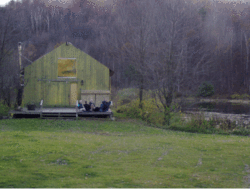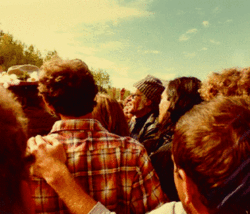 Hadrian at the British Museum
Hadrian at the British Museum
Reviewed by Paul Harmon
When most Americans think of Roman emperors, they think of the first five emperors: Augustus, Tiberius, Caligula, Claudius, and Nero. These emperors, all related to Julius Caesar, are usually referred to as the Julio-Claudian dynasty. Collectively, they reigned from 31 BC until 68 CE – some 99 years. In fact, of course, the Roman Empire in the West lasted from the inauguration of Augustus in 31 BCE to the abdication of the emperor Romulus Augustulus in 476 CE some 507 years later and was ruled by about 80 emperors from several different dynasties.
The dynasty that has long attracted the interest of historians and Gay readers is the third dynasty, often referred to as the Dynasty of the Adoptive Emperors. Gibbon famously referred to this period as the apex of the Roman Empire and suggested that during this period humankind was as happy and prosperous as it had ever been before or since. The period began in AD 96 when, following the murder of Domitian, a particularly nasty tyrant, the imperium was given to Nerva, an elderly senator with a reputation for fairness and intelligence. Having no sons, and knowing he needed to keep control of the army, Nerva adopted Trajan, the general in charge of the Roman armies of the Rhine. Trajan was officially married, like all Roman aristocrats, but he preferred the company of young men. Thus, Trajan, in turn, had no children, and decided to adopt his nephew, Hadrian, as his successor. Hadrian, in turn, adopted his successor. In fact, Hadrian adopted two generations of successors, first adopting an elderly Antoninus Pius as his son, and then arranging for Antoninus Pius to adopt Marcus Aurelius. Marcus Aurelius broke this series of adoptions, preferring the pleasures of married life and having children; he allowed his son, Commodus, to become emperor. Commodus was a nasty piece of work who got himself killed in 192 AD, ending the Adoptive Dynasty.
Those who have seen the movie Gladiator will recall that the author of the movie script suggested that Marcus Aurelius may have been ready to adopt a military general, Maximus, as his successor, but was killed by Commodus to prevent that. There is no historical data to support that notion. However that may be, for a little over 100 years, Rome was ruled by a succession of intelligent, diligent men who chose their successors rather than simply passing on the imperium to their children. The fact that some were old and without sons and that others were homosexual contributed to the success of this period by avoiding unfit offspring, and giving the imperium, instead, to mature men who had already proved their ability to manage armies and administer a complex civil government.
Under Trajan the empire grew to include the most territory it ever encompassed. It stretched from Gibraltar to England and the Netherlands, down along the Rhine, and across the Danube to the Black Sea and Turkey. It included every land touching the Mediterranean, all of the Middle East, and all of North Africa. Trajan, just before his death, completed the dream that so many Roman generals had failed to achieve, and conquered Mesopotamia, extending the boundary of the Empire, in the East, to include Babylon and the Persian Gulf. Then Trajan, his health having been damaged by his Mesopotamia campaign, died of a stroke. Hadrian, who had been a general in his own right for many years, was proclaimed Emperor on August 11, 117 CE. Hadrian proceeded to rule for 21 years, dying in July of 138 CE. During those 21 years, he established himself as one of the very great Roman emperors. As a result of his extended love affair with a Greek youth, Antinous, he also established himself as Rome’s most famous “Gay” emperor.
The first challenge Hadrian faced, following his accession, was the problem of managing the recently expanded empire that he inherited from Trajan. Hadrian decided that the Roman Empire was overextended, and he proceeded to withdraw from territories that would be hard to defend. He gave up, for example, all of Mesopotamia and reestablished the Eastern border of the empire in Syria. Within the area he chose to keep – which was most of the empire – he established forts and walls to make defense easier. Thus, Hadrian’s famous wall across northern England came to define the boundary between England and the wilds of Scotland. In a similar way he built walls and forts along the Rhine and the Danube in an effort to exclude the Germanic tribes from the Roman Empire.
To accomplish this refinement of Rome’s borders, Hadrian personally traveled throughout most of his reign. In essence, his court traveled with him, setting up camp with the army, wherever Hadrian spent time. This is not to suggest that Hadrian moved quickly. His life was a slow progression from one Roman province to another. At each stop he would analyze the strategic position of the province and adjust and fortify the borders as needed. At the same time Hadrian loved architecture and built roads and commissioned civic and religious buildings throughout the empire.
This same pattern was followed by his successor, Marcus Aurelius, who apparently built a large Roman bathhouse in a town in Southern Turkey that was subsequently destroyed by an earthquake around 580 CE. Recently, Belgium archaeologists have been excavating the site, and have unearthed the bathhouse in which they have found several large statues of the various emperors and empresses of the Adoptive Dynasty. Along with a statue of Marcus Aurelius and his wife, they have also discovered statues of Hadrian and his wife. This discovery stimulated the British Museum to mount a major exhibit on Hadrian. The exhibit ran from July 24 to October 26 of this year and provided what was probably the most complete display of Hadrian artifacts ever shown in one location.
For those who know the British Museum, the Hadrian exhibit was in the library at the center of the Great Court. The original museum had been a square building with a large hollow courtyard in the center. When the museum was updated a few years ago, a round library a great dome that was build in the center of the building’s courtyard. A glass roof was then erected to cover all of the space from the top of the library dome to the walls of the original building, creating a large covered courtyard. The Hadrian exhibit was housed in the library. As one entered the Great Court, right in front of the library, on a raised platform, was the larger than life statue of Antinous, in the guise of the Egyptian god Osiris. This statue, which normally resides in the Vatican Museum, is probably the most exciting piece of soft-core porn created in the ancient world. The standing youth is wearing an Egyptian headdress and an Egyptian linen kilt. His strong masculine chest and legs are nude. Unlike other Egyptian figures, however, it is nearly impossible not to focus on how the tip of Antinous penis pushes forward his kilt, creating an unmistakable bulge. His head is upright, but his upper body is thrust backward, emphasizing not only his back muscles, but a powerful and very shapely ass. This wonderfully erotic statue, made for the grieving Hadrian after the youth’s death, was clearly designed to remind Hadrian of just how exciting the young man had been. So much for setting the tone for the exhibit.
The exhibit was organized to move viewers around the inside of the circular library. Curved canvas panels had been erected on the inside of the library to cover the book-lined walls. The exhibit took advantage of these panels to project color slides. Thus, the exhibit combined objects, narrative in the form of either textual posters or recordings one could listen to with headphones, and projected images. The three were combined about as effectively as I have ever seen it done.
The first pie shaped section of the exhibit focused on Roman society during the age of Trajan and Hadrian. The second focused on the size and scope of the empire, the military forces used to create and enforce the Roman peace, and the role of Trajan in creating, and Hadrian in bounding the empire together, at its height. There was also a collection of statues of the various emperors and their wives. Hadrian was variously portrayed via busts and statues as an adolescent, a young man, and as emperor. There, among the other statues, was the five-foot high marble head of the statue of Hadrian that had recently been excavated from the Roman bathhouse in southern Turkey.
The next stage of the exhibit focused on Hadrian’s various building projects. It being England, there were many pictures and artifacts of Hadrian’s wall that divided England from Scotland, but there were also models and wonderful photos of the Pantheon, the Forum of Trajan that Hadrian built in Rome, and Hadrian’s mausoleum. The Pantheon is, perhaps, the most famous and powerful example of monumental Roman architecture still in existence. The building was designed as a drum covered by a dome – much like the library in which the exhibit was located. The interior space is defined to encase a complete sphere. Thus, the dome is a hemisphere, and the drum is the same height, so that the dome could be reversed and sit within the drum. This created a very large space, and the concrete dome of the Pantheon emphasizes the skill of the Roman engineers who could assemble such a huge, open space. The building was created as a temple where all the gods of the empire could be worshipped equally – each having his or her niche in the circular wall. Hadrian’s mausoleum and the bridge approaching it, the Pons Aelius, were later desecrated by the popes who converted it into a fortress, the Castel Sant’Angelo.
The exhibit also provided good examples of buildings Hadrian built elsewhere. Hadrian was especially fond of Greek culture and adorned Athens with a library and a monumental temple to Zeus. The most extensive work of architecture undertaken by Hadrian, however, was his villa in Tivoli. He began working on the country villa, which was located about 20 miles outside Rome, soon after he became emperor, and continued to expand it all throughout his life. The scale was staggering, and it was said to ultimately contain some 900 rooms. More to the point, it contained whole areas in which Hadrian recreated scenes from countries he visited and enjoyed. Thus, there were Greek areas and Egyptian areas, canals and pools, baths, lakes, and vast Greek and Latin libraries. A wonderful scale model of the extensive grounds of the villa grounds covered the 8 x 10 surface of a table. Examples of wall carvings and pillars illustrated the quality of workmanship that a Roman emperor could command. These was complemented by pictures of the ruins of the villa, as it is today, projected on the round wall behind the architectural model.
Proceeding from the display of Hadrian’s architectural efforts, one finally arrived at a room that focused on the emperor’s famous love affair with Antinous. Love affairs between men were not unusual in Rome, but the intensity of the relationship between the emperor and Antinous was without precedent. Hadrian apparently met Antinous when he toured Turkey in 123 BCE. Thereafter, Antinous traveled with the Imperial court until the boy died in 130 CE in his early Twenties.
Antinous drowned in Egypt under circumstances which will never be known. It may have been an accident or a suicide, or it may have involved participation in some ritual. Both Hadrian and Antinous were fascinated by occult mysteries and participated in various rituals throughout their travels. Whatever the cause, the emperor was stricken. He arranged to have Antinous declared a god in Egypt, renamed a town after him, and erected a major temple to the divine Antinous. He later created a copy of that temple at his villa at Tivoli, which is where the standing statue of Antinous as Osiris was discovered. But it didn’t stop there; to please Hadrian, statues of Antinous were erected throughout the ancient world. It’s still unclear whether there are more existent sculptures of the emperor Augustus or of Antinous. My personal favorite is a standing sculpture of the youth in the museum at Delphi – that wasn’t included in this exhibit – but there are many others, and the Hadrian exhibit had a number of the best. Most stress that Antinous was a strong, masculine young man, with a classically beautiful Greek face, who could easily have been taken to be a young Roman legionnaire or a Greek athlete. Other statues, like the one at Delphi, however, show him as a youth with a more wistful or melancholy look. As you might imagine, the Egyptian Christians found the whole thing quite offensive, and did what they could, when they eventually came to power, to suppress knowledge of the existence of the love affair between the youth and the great emperor. Luckily for us, the beauty of the Antinous sculptures were such that Roman cardinals competed to preserve each bust and statue of Antinous as they were uncovered during the Renaissance.
The last area of the exhibit focused on Hadrian’s last years and his arrangements for his successors. The age of Augustus is usually referred to as Rome’s Golden Age. It was the age of Seneca, Ovid, Virgil, Juvenal, Horace, and Plutarch. The age of Trajan, Hadrian, and Marcus Aurelius is often referred to as Rome’s Silver Age. The writers of this period included Juvenal, Tacitus, and Apuleius. In his Meditations, Marcus Aurelius defined the stoicism of the age. Hadrian wrote an autobiography that was praised in the ancient world, but did not survive. He also wrote Greek and Latin poetry that is also mostly lost. His famous death poem, Animula Vagula, Blandula… survives, and was, fittingly, written in large letters on the final wall of the exhibit so that it was the last thing one saw, just as one left the exhibit area and returned to the Great Court.
The catalog of the exhibit, Hadrian: Empire and Conflict, is very well done and available from the British Museum or Amazon.com. Its 256 lavishly illustrated pages provide an excellent introduction to Hadrian’s life and times.
The most important ancient source of information on Hadrian is the Historiae Augustae, a book written in the reign of the emperor Diocletian, who ruled from 284 to 305 CE. The Historiae Augustae is modeled on Suetonius’s Lives of the Caesars, which described the Julio-Claudian emperors. The Histroiae Augustae is said to be written by Aelius Spartianus and others, although everything about this book is disputed. The author or authors probably had access to Hadrian’s autobiography, but they also allowed themselves to include rumors and fantasies, bringing everything into question and providing an occupation for several generations of scholars.
There are several modern biographies of Hadrian, none completely satisfactory. My current preferred history is Anthony R. Birley’s Hadrian: The Restless Emperor. Similarly, there are many specialized books on Hadrian. There are books on Hadrian’s architectural accomplishments, his wall in England, and on the places he visited while emperor.
The most famous modern novel on Hadrian is the monumental recreation of his memoirs by Marguerite Yourcenar. Mme Yourcenar, a French Lesbian, started her project in 1924 and published the French version of the Memoirs of Hadrian in 1951. She began by acquiring and studying all the books that Hadrian might have had in his library. Then she visited the places he had enjoyed, and proceed to try to imagine his life. As she explained it: “I fell to making, and re-making, this portrait of a man who was almost wise.” In 1981 Mme Yourcenar became the first women to be elected to the French Academy, a reflection of both the quality of her writing and the special place that the Memoirs of Hadrian occupies in modern literature.
If you would like to read a more recent novel, you might enjoy Ben Pastor’s The Water Thief. This amusing novel purports to be written by Aelius Spartianus, a young army officer who has been assigned by the emperor Diocletian to compile the Historiae Augustae. In essence, it is a murder mystery that describes Spartianus’s efforts to unravel just what happened to Antinous during his fateful visit to the Nile. To remind you of the duration of the Roman Empire, Pastor has Spartianus complain, on several occasions, that it is nearly impossible for him to figure out what happen to Antinous, given that it all happened some 160 years before he got his commission.
Paul Harmon is a writer living in San Francisco and working, on and off, on a novel about the famous Thebian general, Epaminondas.
This is an excerpt. Subscribe today and keep the conversation going! Consider giving a gift subscription to your friends who could use some wisdom! This is anIf there's an article listed above that was not excerpted online, copies of this issue are available for purchase. Contact us at editors@gaywisdom.org



